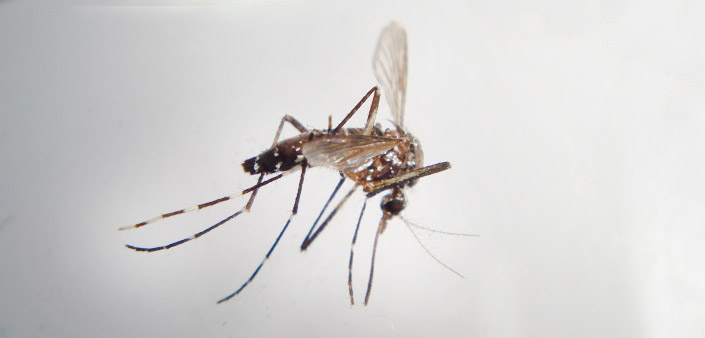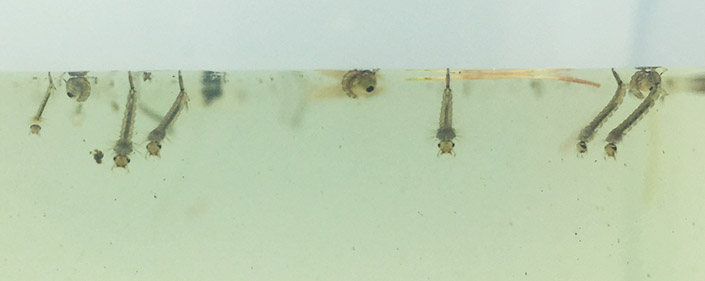Benefits of Using Our Service
SmellGREEN® Natural Insect Repellent, Non-Toxic, Repels Rapidly Mosquitoes (Midges), Fleas, Louse & Other Biting Insects
Aquatain AMF Liquid Mosquito Film™, Non-Dangerous, Non-Toxic, Prevents Mosquito Larvae from Breathing & Female Mosquitoes from Depositing Their Eggs on The Water Surface
SafePRO® Mosquito Misting System with Natural Insect Repellent, 500 ft Long Misting Barrier Creates an Effective Mosquito-free Zone
Starkeys® Outdoor Waterproof Insect Killers and Indoor Sticky Pad Units, Eco-friendly Solutions for Insect Control without The Use of Toxic Pesticides
Solar Trap™ Solar Power Outdoor Insect Trap, Clean Energy Helps to Reduce The Emission of CO2 Gas, Environmental Friendly and Energy Saving
Mosquitoes
Mosquito adults are small, flying, midgelike insects. Female mosquitoes can be differentiated from similar insects by the presence of a long slender proboscis that is adapted for piercing skin and sucking blood, and long slender wings that are covered with small scales. Male mosquitoes have scale-covered wings, but their probosces, or beaks, are shorter and thicker than the females’, and are adapted for sucking plant juices and other sources of sugar rather than blood.
In the immature stages, called larvae or wigglers, mosquitoes are usually black or dark brown and occur in nonmoving or nearly still water. Most mosquito larvae have a distinctive siphon or air tube at the rear of their bodies. The next stage is the pupal stage; pupae, called tumblers, are also aquatic and are small, roundish forms, usually black in color.
Management
Mosquito control is accomplished by searching out mosquito larvae in standing water and treating the water with a material that kills the larvae. Many materials currently in use are biological or physical in origin and are highly specific for mosquitoes, with little or no effect on other organisms.
Structure
Mosquitoes found inside a building have entered from the outside in almost all cases. Therefore, barriers preventing access to the building are the first line of defense. Cracks around windows and doors where mosquitoes may enter should be sealed. Well-fitted screens will also limit their access to buildings.
Sanitation Practices
- Standing water – Eliminate standing water and water leaks.
- Containers – Empty water. Store in an inverted position.
- Dispose – Cover so mosquitoes cannot lay eggs.

Common mosquitoes
Up to the present, we have found 70 kinds of mosquitoes. The most common kinds are Aedes Albopictus, Anopheles Minimus, Anopheles Jeyporiensis, Culex Pipiens Quinquefasciatus, Aedes Togoi and Culex Tritaeniorhynchus.

Life Cycle
The life cycles of mosquitoes vary widely from species to species. Some female mosquitoes lay single eggs on water surfaces; others lay single eggs on moist soil where later flooding is likely. Still other species lay batches of eggs, called rafts, 100 or more at a time on water surfaces. Eggs deposited on water surfaces usually hatch within a day or so, but eggs laid on soil surfaces do not hatch until flooding occurs, which may be months or even years later.
Larvae, which are nearly invisible to the naked eye, hatch from eggs. Larvae molt three times to become 4th-stage larvae. Several days later, this larval form molts again to become a pupa. Adult mosquitoes emerge from pupae 1 to 2 days after that, with male mosquitoes always emerging first. In summer the entire life cycle, from egg to adult, may be completed in a week or less.
Communicable Diseases
Female mosquitoes of nearly all species require blood from vertebrate animals to develop eggs, and many species bite people, pets, and livestock for this purpose. The most important consequence of this is the transmission of microorganisms that cause diseases.
Zika Virus Infection
Zika virus infection is a mosquito-borne disease caused by Zika virus. The infection may associate with adverse pregnancy (microcephaly) and neurological and autoimmune complications such as Guillain-Barré syndrome (GBS). The World Health Organization has concluded that Zika virus infection during pregnancy is a cause of congenital brain abnormalities, including microcephaly, and that Zika virus is a trigger of GBS.
Zika virus can be transmitted to humans through the bites of infected Aedes mosquitoes. In Hong Kong, the local species such as Aedes albopictus can be considered as potential vectors.
Dengue Fever
Dengue fever is an acute mosquito-borne infection caused by the dengue viruses. This is found in tropical and sub-tropical regions around the world. For instance, dengue fever is an endemic illness in many countries in South East Asia. The principal type of mosquito that transmits the disease is called Aedes. The dengue viruses encompass four different serotypes, each of which can lead to dengue fever and dengue hemorrhagic fever.
Japanese Encephalitis
What is Japanese encephalitis Japanese encephalitis is a mosquito-borne disease caused by the Japanese encephalitis virus. The virus is transmitted by the bite of infected mosquitoes . The principal type of mosquito that transmits the disease is called Culex Tritaeniorhynchus. The disease occurs mainly in the rural and agricultural areas of Asia and the Western Pacific Region. It is a rare disease in Hong Kong. There are less than 10 cases reported in the past ten years.
Malaria
Malaria is a serious and sometimes fatal disease caused by a group of malaria parasites, namely Plasmodium vivax, Plasmodium falciparum, Plasmodium ovale, and Plasmodium malariae. The principal type of mosquito that transmits the disease is called Anopheles. It is commonly found in many parts of tropical and sub-tropical areas where the climate is warm, like Africa, South-East Asia and South America.
Johnson Group Mosquito (Midge) Control Service
There is no better defense against mosquitoes than a tailor-made treatment plan from Johnson Group. We aim to minimize the use of traditional chemicals (including products toxic to people and their surroundings) in and around the home/premise while maintaining an effective, diligent mosquito control program. Least-toxic chemical controls are used as a last resort.
Chemical methods for controlling mosquitoes
- Thermal fogging and cold-mist fogging
- Larvicidal oil or Anti-malarial oil
- Bacillus thuringiensis subsp. israelensis (Bti)
- S-Methoprene
Chemical Treatments
Chemical Treatments are particularly useful in dealing with large population of mosquito adults.
Thermal Fogging
Thermal fogging is a space treatment against flying adult. It can reach air spaces in areas obstructed by dense vegetation or other objects. When the flies come into contact with the droplets (usually in 5 – 30 micron), they will be killed immediately.
Cold-mist Fogging
Cold fogging is a space treatment against flying adult. Though It cannot reach air spaces in areas obstructed by dense vegetation or other objects, it is easily to control its distance and coverage, and is more suitable to apply in urban areas. When the flies come into contact with the droplets (usually in 5-30 micron), they will be killed immediately.
Larvicidal oil or Anti-malarial oil
It is a petroleum distillate, when applies directly to water bodies, it will form a thin film on the water surface and kill larvae and pupae by suffocation.
Bacillus thuringiensis subsp. israelensis (Bti)
The bacterium Bacillus thuringiensis subsp. israelensis (Bti) infects and kills mosquito larvae. It must be consumed by the larvae and acts as a stomach poison, damaging mid-gut cells of mosquito larvae. It is highly selective, killing only mosquitoes and larvae of a few other related flies.
S-Methoprene
S-Methoprene inhibits the development of larvae. It is more effective in the late larval stage.



